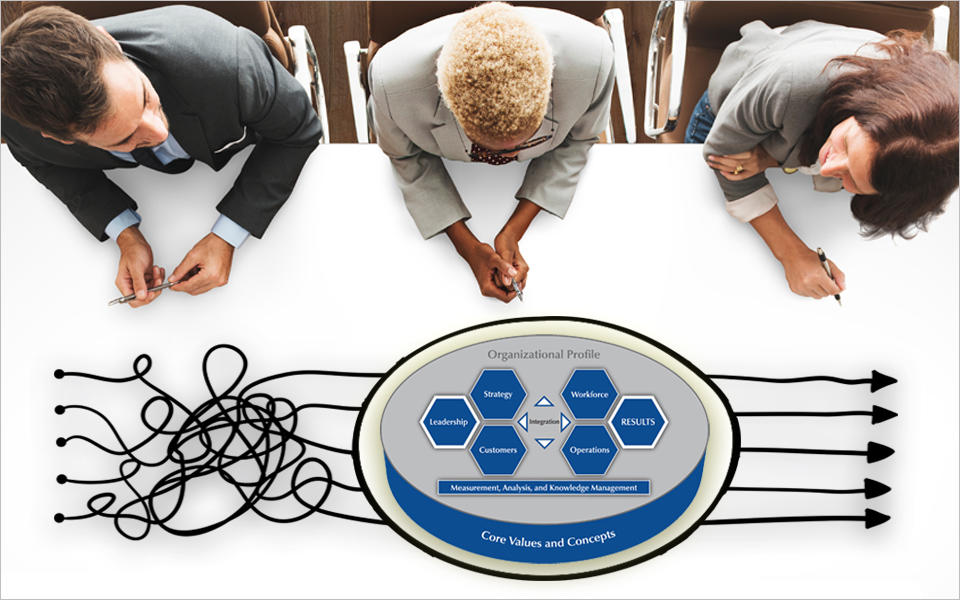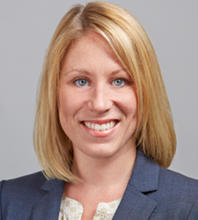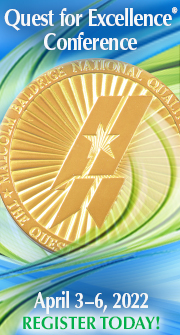Blogrige
The Official Baldrige Blog


Guidehouse
2014 Baldrige Award Recipient
The Baldrige Excellence Framework and its Criteria can be daunting for organizations new to the performance excellence model. “When you first open that framework it can appear too complex,” said Allison Carter, Director, Guidehouse (2014 Baldrige Award recipient, formerly PricewaterhouseCoopers Public Sector Practice), Washington, DC.
But at the Baldrige Program’s annual Quest for Excellence® Conference in March, Carter will present some tactical tips on taking that first step in using the framework. She aims to make that barrier to entry a little bit lower.
The presentation will be “an attempt to take something really complex and simplify it a little bit so that it’s more manageable and approachable by a company of any size, so that the company can pick up the framework and have a better understanding of how to get started and quickly identify key areas on which to focus,” said Carter, who also serves on the Baldrige Judges Panel.
A Common-Sense Approach
“Once you actually look at the framework, it’s so common sense that I think that it is something that anyone can rally around, even if you don’t call it Baldrige,” she said.
A lot of our leaders were opposed to saying, "We’re doing Baldrige." We’re just doing good business. I think you can get behind the Baldrige framework because it’s common sense, and it’s easy for people to understand how this is applicable to their own organizations.
An organization does not need to try to win the Baldrige Award to get started in leveraging elements of the framework. In her upcoming presentation, Carter plans to break down the steps so that organizations can use the framework to create a snapshot of organizational gaps.
How an organization breaks down the framework depends on the organization, said Carter. An organization might look at specific challenges identified by surveys; for example, a low workforce engagement score. For issues related to the workforce, an organization can go straight to category 5 and review those questions to identify gaps. What are the questions that we should be asking ourselves regarding workforce?
She said, starting with just one category may help with systemic issues, but the next step should be looking at a comprehensive, integrated Baldrige approach across categories. Once an organization delves into workforce questions, for example, it might quickly realize that other categories, such as leadership and strategy, are closely aligned, Carter added, and they may be the next categories to consider.
Common Performance Gaps
What would happen if you brought together the senior leaders of an organization and asked them Criteria questions?
At the beginning of her company’s use of the Baldrige framework, Carter said she did just that. What was interesting is what asking the questions revealed. Either nobody would have an answer or there would be four or five different answers to the same question. For example, Carter said that one leader in one part of the organization might explain one way he/she strategizes, but in another part of the organization, another leader might take a completely different approach to strategy. Such a lack of alignment/integration of processes across the organization might highlight a gap.
In addition to lack of alignment/integration, Carter said a common organizational gap that she sees is a process that is not measured. Similarly, the organization might be gathering lots of different data for measurement, but the data aren’t helping the organization measure what is important. Such an oversight could lead to planning without execution. For example, an organization might have a strategic plan, but the plan has not been shared and understood (i.e., deployed) across the organization, she said.
Discovering the Value of the Framework
At first, senior leaders in the partnership in which Carter’s practice belonged weren’t sure about the integration and benchmarking inherent in the Baldrige Criteria. Each practice within the partnership had autonomy to run its business its own way—perhaps akin to individual hospitals in a system or agencies in a city or departments in a school.
“I think a lot of the partners [at first] felt like the Baldrige Criteria are not for us because… we are unique.... I think one of the things that was realized is that the Baldrige Criteria could help us streamline certain operational processes that were consistent. A hard look at the Criteria led to ways to help us measure processes better or differently. I think once senior leaders started to see the value in that, they started becoming believers in a framework like Baldrige. It wasn’t about forcing them to abide by the same set of standards. It was more about cleaning up our operations.”
Another thing that was tough for us at first was on the measurement side, Carter said; asking for measurement transparency could mean competition and some unwanted revelations among partners.
“I think leaders started to see the value of sharing information and using it to do root-cause analysis around why one sector might be doing better than another. We were using it with an eye toward improvement and not in a punitive way. Some best practices could be shared across sectors and that really helped our business. There was value in the integration and alignment of our leadership team.”
What’s Happened Since the Baldrige Award
Carter said that her organization has gone through a tremendous amount of change since it received the Baldrige Award. The public-sector practice was sold from the parent company PricewaterhouseCoopers (PwC), and since then, the now-named Guidehouse has acquired Navigant Consulting.
Guidehouse has “expanded, changed, and rebranded,” she said. “But I think the core principles of the Baldrige framework remain a tenet that we are very committed to in terms of quality and performance improvement. Because of that, we have been able to weather these changes and remain successful in the marketplace. We remain recognized by our clients… who know they’re getting this high-quality team and a reliable strategic partner for consulting services.” She added,
I think the future for our organization has changed dramatically and will continue to change over the next few years, but I think that the foundation we built based on Baldrige while we were with PwC has really served us and helped us weather through significant transformation.
COME. LEARN. NETWORK. ENGAGE.

Quest for Excellence® Conference
NATIONAL HARBOR | March 24–27, 2020
Join us for the 32nd Annual Quest for Excellence Conference showcasing the best practices of the 2019 Baldrige Award recipients and 17 former recipients!
AWARD CEREMONY
Tuesday, March 24
Join us Tuesday evening for the Award Ceremony and Reception honoring the 2019 recipients.
About the author
Related Posts
Comments
Ray,
Thanks for being a fan, and for offering an opportunity for improvement. As we revise the framework for 2021-2022, we’d welcome your suggestions on strengthening the theme of sustainability. Right now, we address the issue in the core value of Societal Responsibility. In Criteria in item 1.2, we ask how you consider societal well-being and benefit as part of your strategy and daily operations and how you contribute to the well-being of your environmental, social, and economic systems. We also ask how you address and anticipate any adverse societal impacts of your products and operations. How can we improve on this? Please send your suggestions to iday [at] nist.gov (iday[at]nist[dot]gov).
Until recently I worked at a very large and complex healthcare provider (12,000+ employees). A couple of years ago some senior leaders were bemoaning the fact that so many employees only knew "their" immediate part of the organization, and were unaware of the 'bigger picture.' I suggested that they use the Baldrige Organizational Profile - that they write it for the organization and then use that to educate/inform new employees, new mangers, new leaders, etc.
For some reason this didn't resonate with them and my suggestion was ignored; however, I still think it was a great idea for the reason suggested above. Additionally, if that was done it could later be leveraged as an introduction to the Framework that could then be further built upon!






I've been a fan of the Baldrige for 20 years, but I've been quite surprised to see how little it addresses sustainability. Explain, if you would, how that is going to be incorporated into the model moving forward.
Only this month Blackrock Capital, $7 trillion under management, and today BP announced they are moving their organizations rapidly on a path of sustainability. In sum, they are recognizing industry social and environmental costs are eroding everyone's business profit first, and impacting the planet too.